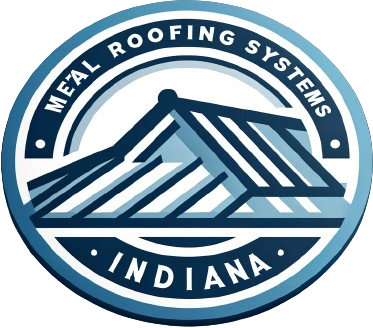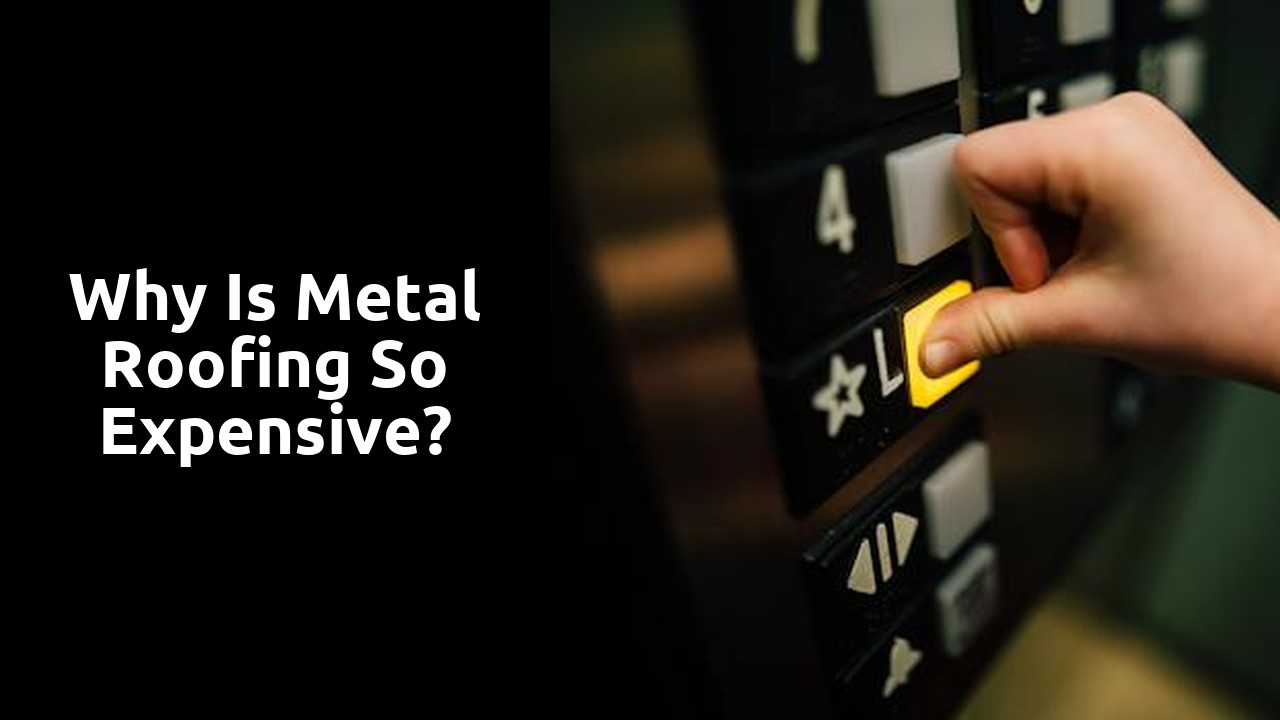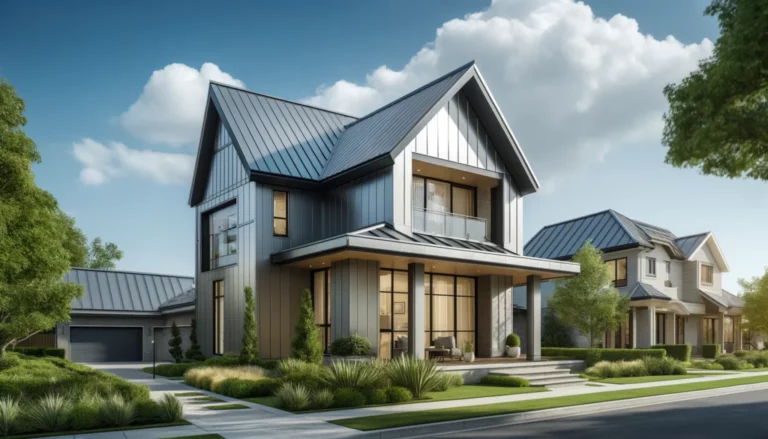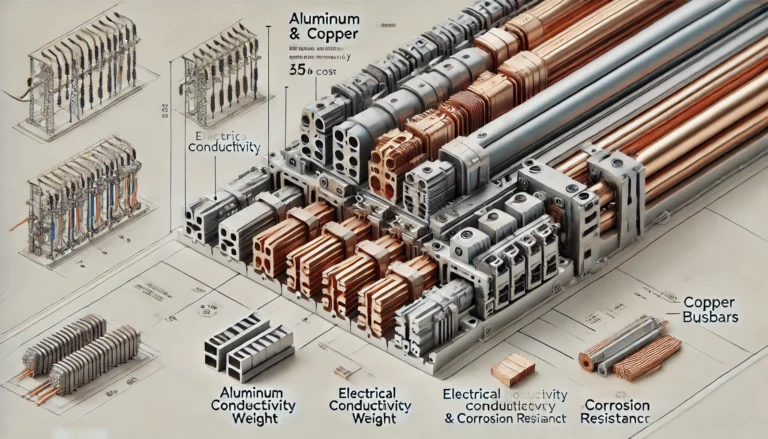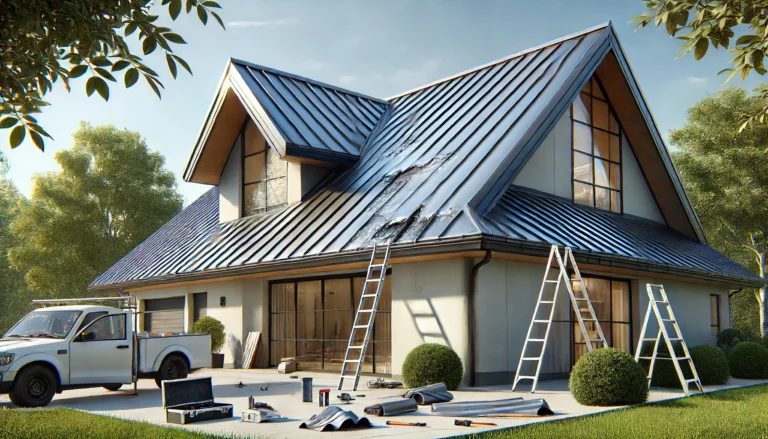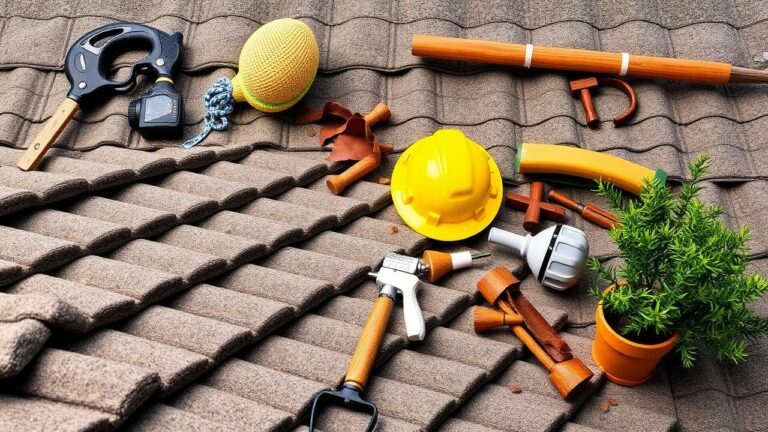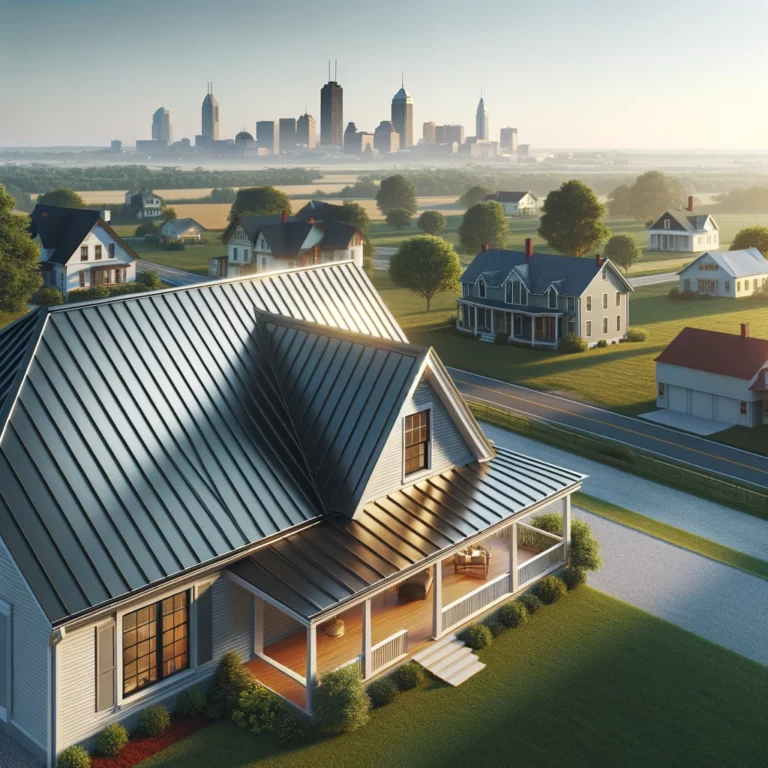Why is metal roofing so expensive?
Table Of Contents
The Cost Conundrum: Unraveling the Price of Metal Roofing
One of the main reasons why metal roofing is expensive is due to the materials used in its construction. Metal roofs are typically made from high-quality materials such as steel, aluminum, or copper. These materials are durable, long-lasting, and able to withstand various weather conditions, which adds to their overall cost.
In addition to the cost of materials, the installation process of metal roofing also contributes to its higher price. Metal roofs require specialized installation techniques and equipment. Because of their weight and unique design, they often require professional installers with specific knowledge and experience in working with metal roofing systems. This skill and expertise come at a premium, further driving up the overall cost of the project.
View this external resource for great tips and advice.
Understanding the Price Tag: Decoding Metal Roofing Expenses
Metal roofing is often seen as an expensive option for homeowners, and it’s important to understand the factors that contribute to its high price tag. One main factor is the material itself. Metal roofs are typically made from durable materials such as steel, aluminum, or copper, which are strong, long-lasting, and resistant to weathering. These materials have a higher cost compared to traditional asphalt shingles or other roofing materials. Additionally, the manufacturing process for metal roofing involves specialized machinery and expertise, which also adds to the overall expense.
Another cost consideration is installation. While metal roofs can be more complex and time-consuming to install compared to other roofing options, the investment in a skilled and experienced contractor can ensure a proper installation that will last for many years. The installation process often requires additional equipment and specialized techniques, which can further drive up the overall cost. However, it’s important to note that the longevity and durability of metal roofing can offset these initial expenses in the long run, making it a worthwhile investment for homeowners seeking a durable and long-lasting roofing solution.
Unveiling the Factors Behind Metal Roofing Pricing
The pricing of metal roofing can often leave homeowners puzzled, as it tends to be noticeably higher than other roofing options. However, several factors contribute to its higher price tag. Firstly, the raw materials used in metal roofing, such as steel or aluminum, are inherently more expensive than traditional roofing materials like asphalt or wood. The manufacturing process of metal roofing also involves specialized equipment and labor, resulting in additional costs that are passed on to the consumer.
Moreover, the durability and longevity of metal roofing play a significant role in driving up its price. Metal roofs are known for their exceptional resistance to harsh weather conditions, including strong winds, heavy rains, and hailstorms. Unlike traditional roofs, metal roofs have a lifespan of 40 to 70 years, significantly reducing the need for replacement or frequent repairs. This longevity translates into long-term savings for homeowners, making metal roofing a worthwhile investment despite its initial higher cost.
The Investment Perspective: Analyzing the Value of Metal Roofing
Metal roofing may come with a higher upfront cost compared to other roofing materials, but it offers significant long-term value. One of the key factors that contribute to the higher cost of metal roofing is its durability and longevity. Unlike traditional asphalt shingles that typically need to be replaced every 15-20 years, metal roofs can last for 50-70 years with proper maintenance. This means that homeowners who opt for metal roofing will likely save money in the long run as they won’t have to incur the cost of frequent replacements.
Another aspect to consider when analyzing the value of metal roofing is its energy efficiency. Metal roofs have excellent thermal properties, reflecting heat from the sun and helping to keep the interior of a building cooler. This can lead to a significant reduction in energy consumption for cooling purposes, resulting in lower utility bills over time. Additionally, metal roofs are often made from recycled materials and are themselves recyclable at the end of their lifespan, making them a more environmentally friendly choice. All these factors combined make metal roofing a worthwhile investment for homeowners who value durability, energy efficiency, and sustainability.
Breaking Down the Costs: A Closer Look at Metal Roofing Expenses
When it comes to metal roofing, the expenses can seem quite high at first. However, taking a closer look at the costs can help us understand why it is priced the way it is. One major factor contributing to the higher price tag is the durability and longevity of metal roofs. Unlike other roofing materials, metal roofs have a longer lifespan and require less maintenance and repair. This means that homeowners can save on future expenses that they would otherwise incur with other roofing options.
Another aspect to consider is the energy efficiency of metal roofs. Metal roofs have excellent heat-reflective properties, which can significantly reduce energy consumption for cooling during hot summers. This ultimately leads to lower energy bills over time. Additionally, metal roofs are also resistant to fire, pests, and extreme weather conditions, making them a reliable and cost-effective choice in the long run. While the upfront costs may be higher, the investment in a metal roof can provide long-term savings and peace of mind.
Metal Roofing: A Worthwhile Investment or a Financial Burden?
Metal roofing has long been considered a premium choice for homeowners due to its durability and longevity. The initial expense of installing a metal roof is undeniably higher compared to other roofing materials, such as asphalt shingles or clay tiles. However, it is essential to look beyond the price tag and consider the long-term benefits that metal roofing offers. The superior lifespan of metal roofs, often exceeding 50 years, means that homeowners will experience significantly fewer maintenance and replacement costs over time. Additionally, metal roofs are highly resistant to weather damage, including wind, hail, and fire, providing an added layer of protection and security for homeowners. While the upfront investment may be substantial, the value and peace of mind that metal roofing provides make it a worthwhile long-term investment for those seeking durability and longevity in a roofing solution.
However, it’s important to acknowledge that metal roofing may not be suitable for every homeowner’s budget or needs. The higher initial cost can be a deterrent for those who are seeking a more affordable roofing option. Additionally, the installation of metal roofing requires specialized skills and expertise, which can further add to the overall expense. It is crucial for homeowners to carefully weigh the upfront expense against their budget constraints and long-term goals before committing to a metal roof. Conducting thorough research, obtaining multiple quotes from reputable contractors, and considering alternative financing options can provide homeowners with a clearer understanding of whether metal roofing is a financially viable choice for their unique circumstances. While metal roofing may be a worthwhile investment for some, it is essential to assess its potential impact on overall financial stability and budget before making a final decision.
FAQS
Why is metal roofing more expensive than other roofing materials?
Metal roofing is typically more expensive due to its durability, longevity, and energy efficiency benefits. These factors contribute to the higher upfront cost compared to alternative materials.
Does the cost of metal roofing vary depending on the type of metal used?
Yes, the cost of metal roofing can vary depending on the type of metal used. Aluminum and steel are commonly used and generally more affordable, while copper and zinc are higher-end options that come with a higher price tag.
What other factors contribute to the cost of metal roofing?
Other factors that can contribute to the cost of metal roofing include installation complexity, roof size, customization options, additional features (such as insulation or coatings), and the region where you live.
Are there any long-term cost savings associated with metal roofing?
Yes, metal roofing can provide long-term cost savings. Its durability means that it requires less maintenance and has a longer lifespan compared to other roofing materials. Additionally, metal roofs can help reduce energy costs by reflecting heat and improving insulation.
Is metal roofing a worthwhile investment?
Metal roofing is often considered a worthwhile investment due to its longevity and durability. While the upfront cost may be higher, the long-term benefits, such as decreased maintenance and energy savings, can make it a financially sound choice.
Can metal roofing increase the value of my home?
Yes, metal roofing can increase the value of your home. Its durability, aesthetic appeal, and energy efficiency attributes can be attractive to potential buyers, making it a desirable feature that can enhance the overall value of your property.
Are there any financial assistance options available for metal roofing?
Depending on your location, there may be financial assistance options available for metal roofing. Some government programs or energy-efficient initiatives provide grants, tax credits, or incentives to homeowners who install energy-saving roofing materials like metal roofing.
